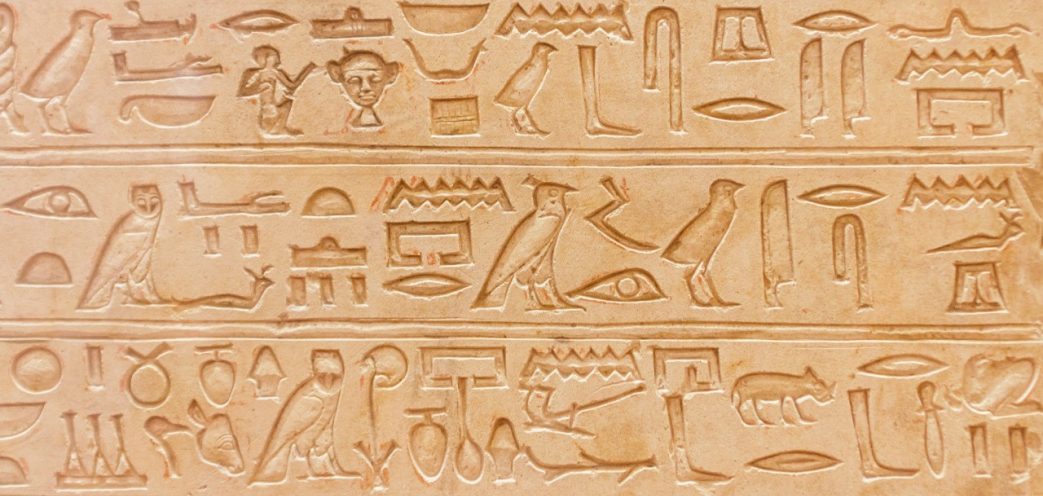Recently, my husband and I were arguing about DVRs, and not just because we like to argue. He says our homegrown MythTV system is a customizable, open source way to record television, and I say that Myth needs updating at the least convenient times, like when we need to record “The Walking Dead.” Then we paused to remember TiVo’s competitor, ReplayTV. What the heck happened to it?
It got me thinking about awesome technology that we somehow ditched. The Airship? Awesome. Slide rules? Awesome awesome. The Mir Space Station? Boss-level awesome. And now just thinking about wristwatches with calculators makes me suffer a sense of short-term nostalgia (as in Douglas Coupland’s novel Generation X, which among other things inspired the use of the term to describe that generation).
Here are some of the coolest features and products that we’ve lost along the way to the here and now.
Commercial skipping on DVRs
Ah, television. We love you long time. But we have to go to work, so we can afford to pay our cable bills, so we can watch more television. That’s where DVRs come in. They record our favorite shows when we’re not around, and after we’ve satisfied our craving for man vs. zombie action, we delete the shows with a mere press of a button.
And if you happened to have a ReplayTV DVR circa 1999, a remote allowed you to skip over three-plus minutes’ worth of commercials with that same button touch.
Think about it. That’s three minutes of your life that you could spend watching more television.
WHAT THE HELL HAPPENED?
A lawsuit. The television industry hates commercial skipping even more than terrorists hate our freedom, because it deprives viewers of exposure to many fine commercials. Or as Wikipedia says, commercial skipping “attacks the fundamental economic underpinnings of free television and basic nonbroadcast services.”
Even though ReplayTV eventually released a model of its DVR that didn’t allow commercial skipping, it was too late. Parent company SONICblue was sued into oblivion for commercial skipping as well as another controversial feature, “Send Show,” which allowed users to share their recordings.
TiVo, ReplayTV’s competitor, wisely sidestepped the issue of commercial skipping with a less provocative feature: commercial fast-forwarding. Now ReplayTV is dead, while TiVo and cable-company DVRs live on.
WHAT COULD HAVE HAPPENED HAD THE TECHNOLOGY BEEN ALLOWED TO MATURE?
You’d be able to play commercials for the products you see on-screen.Watching Ralph Kramden threaten Alice with a trip to the moon in “The Honeymooners“? Click a button, and you’d be presented with a commercial for Virgin Galactic.
IR beaming
Before the days of ubiquitous Wi-Fi, the Treo (see Graffiti, below) and the Palm III used a unique method to transfer files between two phones: infrared (IR) beaming. To send files from one phone to another, we just pointed them at each other and selected “Beam” from Treo’s menu. These files were as simple as business cards and as complex as applications.
I thought it was totally cool to beam my business card to potential clients, although certain potential dates were less impressed. (It wouldn’t have worked out with that guy anyhow. He obviously wasn’t geeky enough.)
WHAT THE HELL HAPPENED?
Just as video killed the radio star, IR beaming was effectively eliminated by the Apple App Store, which gave us the ability to download apps from a centrally controlled system, rather than using peer to peer.
Bump did its best to fill in the file transfer gaps that IR beaming left behind using Wi-Fi, 3G, and Edge instead of IR. But did we really need a bevy of advanced tech to revive a late-1990s feature that only required a cheap infrared LED and receiver? The answer is, we didn’t even need Bump. It was discontinued in 2014.
WHAT COULD HAVE HAPPENED HAD THE TECHNOLOGY BEEN ALLOWED TO MATURE?
File transfers would have increased in capacity. In addition to business cards, users could have started beaming references, personal histories, personal essays, YouTube clips, social networking posts, and entire audition reels. Personnel recruiters would burn out from information overload. And let’s not think about IR malware. It’s too scary.
Graffiti for Palm
The Palm (originally Palm Pilot) was a 1996 personal digital assistant. This PDA came with a calendar, an address book, a calculator, and a note-taker. But instead of a keyboard interface (such as the one its competitor, the Psion Series 3, had), the Palm used a handwriting recognition system called Graffiti.
Graffiti distilled the English alphabet into a series of one-stroke lines and curves that made writing by hand streamlined and fun. It was far more accurate than the previous push for handwriting recognition software (a la Apple Newton). Graffiti was also far less finicky than tiny modern keyboards (or even the iOS virtual keyboard).
WHAT HAPPENED?
Another pesky lawsuit, that’s what happened. Xerox claimed that Palm infringed upon its patent for a handwriting recognition system, called Unistroke. Palm created a two-stroke variant, Graffiti 2, after a court ruling forbade its use of Graffiti. (Note: Palm appealed but a higher court upheld the lower court’s decision.)
But users disliked using two strokes for a character that previously required one. Palm Inc., which made the transition from PDAs to cell phones, discontinued Graffiti by 2003, when the PalmOne cell phone debuted with a plain old keyboard.
WHAT COULD HAVE HAPPENED HAD THE TECHNOLOGY BEEN ALLOWED TO MATURE?
Voice recognition might never have gained any kind of traction. Siri would not be controlled by a voice. Instead, we would summon our personal assistant by rubbing a touch panel; Siri would then appear like a genie from a lamp.
ThinkPad 701c’s Butterfly keyboard
The 1995 Butterfly keyboard was an ingenious design that fit an 11.5-inch keyboard into an 8.25-inch footprint—without physics-defying lamp genies. It turns out that the keyboard was split in half and slid in and out of the ThinkPad’s body with an open (or close) of the lid. Frankly, we’ve had a soft spot for tech that slides in and out automatically ever since we saw HAL’s deactivation in “2001.”
The ThinkPad 701c was the top-selling notebook PC of 1995, and the design was so innovative that it won 27 awards. Watching the keyboard fold and unfold itself again and again created a sense of childlike glee that most adults find hard to replicate without chemical assistance.
WHAT THE HELL HAPPENED?
Evolution killed the Butterfly. Back in 1995, the largest screen IBM could use was 10.4 inches diagonally. Soon after the release of the ThinkPad 701c, IBM increased the screen size of its next release, the ThinkPad 560, to a full 12.1 inches. The new full-size keyboard was suitable even for typists with sausage fingers.
WHAT COULD HAVE HAPPENED HAD THE TECHNOLOGY BEEN ALLOWED TO MATURE?
This folding of space could have progressed further. The ThinkPad’s design was originally based on a bento box. Conceivably, today’s laptops could fold down into the size of one piece of sushi.
A shout-out to a more advanced interface: Acer produced the Iconia laptop with two screens (one of them a touchscreen) and no physical keyboard at all. But it’s still not as cool as a genuinely full-size keyboard springing TARDIS-like out of an 11-inch box.
HyperCard
HyperCard was a native application for the Macintosh circa 1987, and a candle that burned very brightly for a little over a year. Users with a minimal programming background could write scripts on the fly thanks to its scripting language, HyperTalk.
According to Jeanne’s House o’ HyperCard, “a HyperCard data file, called a stack, consists of any number of cards, or screens. Cards contain buttons of several kinds, text fields, and color or black-and-white graphics; any of these objects can be shared between several cards to make a background with common elements…. This open structure lends itself to almost any programming purpose.”
It also had uses in every industry, especially the gaming industry, which brought HyperCard stacks to the masses in the form of choose-your-own-adventure games, puzzle games such as The Fool’s Errand, and the still-awesome-after-all-these-years video game Myst.
WHAT THE HELL HAPPENED?
According to A(pple)ficianado John Gruber, HyperCard failed because it wasn’t “Mac-like” enough. Without the standard GUI and the typical menu bar, HyperCard lacked the look and feel of a Macintosh program that users have demanded since the Reagan administration. And ZDNet suggests that it failed because Apple booted it back to Claris, which started charging money for a previously free program.
Slashdotters believe HyperCard’s demise stemmed from the prevalence of Excel, a spreadsheet application that in 1988 overtook its competitor, Lotus 1-2-3. (Excel’s native tools replaced most of the need for HyperCard.)
But the real reason we don’t live in a HyperCard world is because Apple failed to develop it beyond its 2.41 release in 1998. The company ultimately stopped supporting the software in 2004.
WHAT COULD HAVE HAPPENED HAD THE TECHNOLOGY BEEN ALLOWED TO MATURE?
HyperCard’s “links” between “pages” could easily have been the basis of the web, instead of Tim Berners-Lee’s alternative. Had this been the case, every web browser would play Myst while users wait for pages to load.
Usenet
Back when the World Wide Web was a mere glint in Berners-Lee’s eye, the Internet was an informal distributed network with no formal point of control (as opposed to a bulletin board, which had a dedicated server and an admin). This group of groups was known as Usenet.
Users could pick up a Usenet feed from a local node and read material online, or set up their own node and transfer data. Usenet had more than 100,000 newsgroups, on topics as eclectic as rec.sports.rodeo, where people offered their opinions on saddle bronc riding, to alt.fan.pratchett, frequented by the late Terry Pratchett himself. And let us not forget alt.wesley.crusher.die.die.die.
It also had porn.
WHAT THE HELL HAPPENED?
By 1996, the World Wide Web, separate pages “owned” and paid for by individuals and companies, was firmly established as the go-to destination for genealogical research, help with homework, and of course, porn. PC Magazine blames Usenet’s decline—but not demise, as Usenet will continue to exist as long as there are NNTP servers still running—on pornography.
“Usenet started to become a way for pirates and pornographers to distribute massive quantities of binary files…. [B]y the late ’90s the “binaries” groups began taking up huge amounts of space and Net traffic, and since Usenet libraries reside on each ISP’s server, service providers sensibly started to wonder why they should be reserving big chunks of their own disk space for pirated movies and repetitive porn.”
Many Usenet-ers now discuss the merits of actors like David Duchovny, Benedict Cumberbatch, and Chris Pratt on Internet forums and discussion lists.
WHAT COULD HAVE HAPPENED HAD THE TECHNOLOGY BEEN ALLOWED TO MATURE?
We could be discussing the merits of actors like David Duchovny, Benedict Cumberbatch, and Chris Pratt on Usenet 2.0.
This article/content was written by the individual writer identified and does not necessarily reflect the view of Hewlett Packard Enterprise Company.

